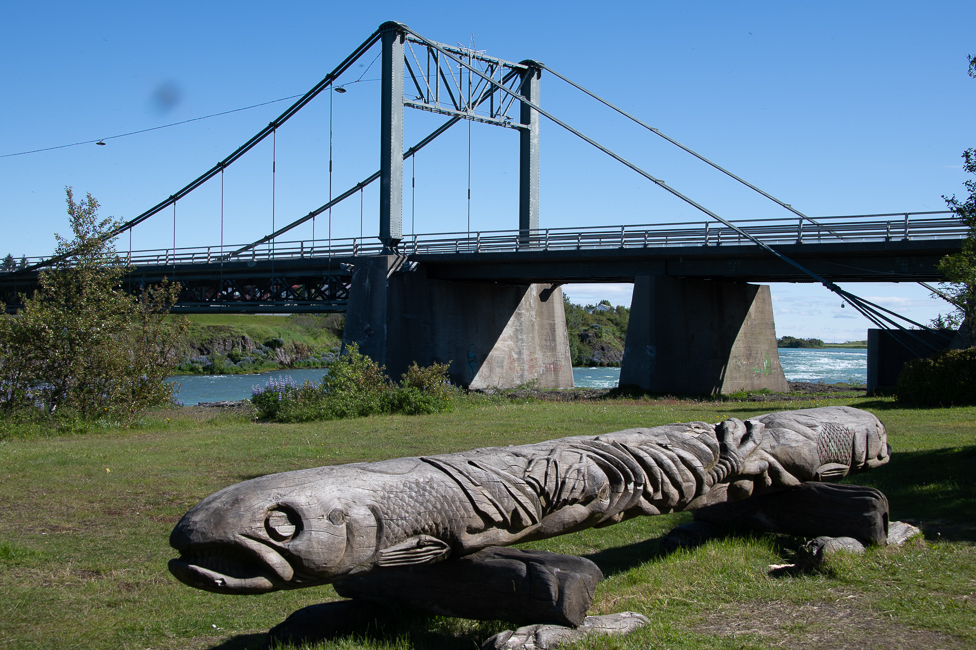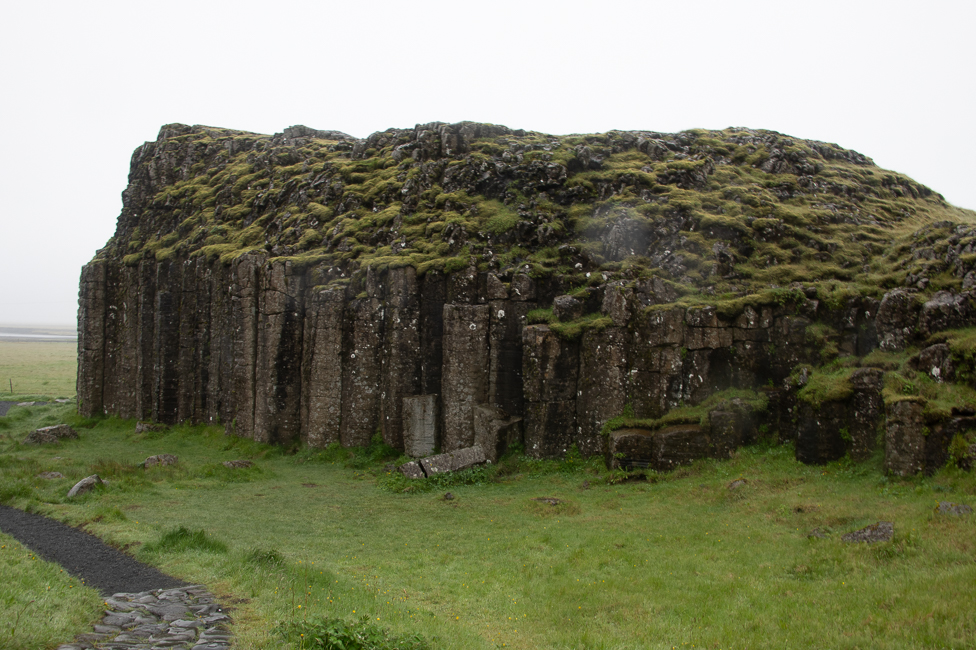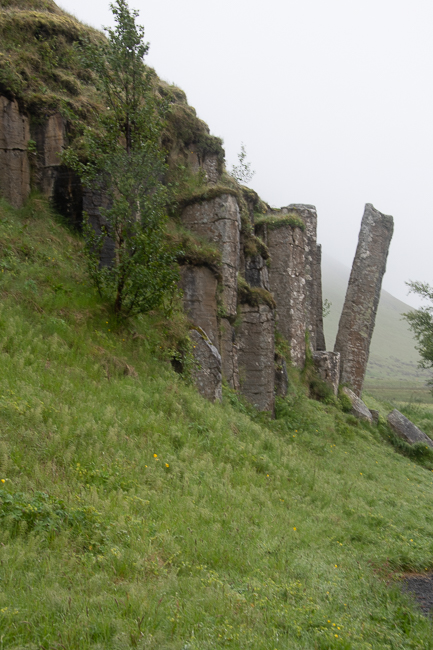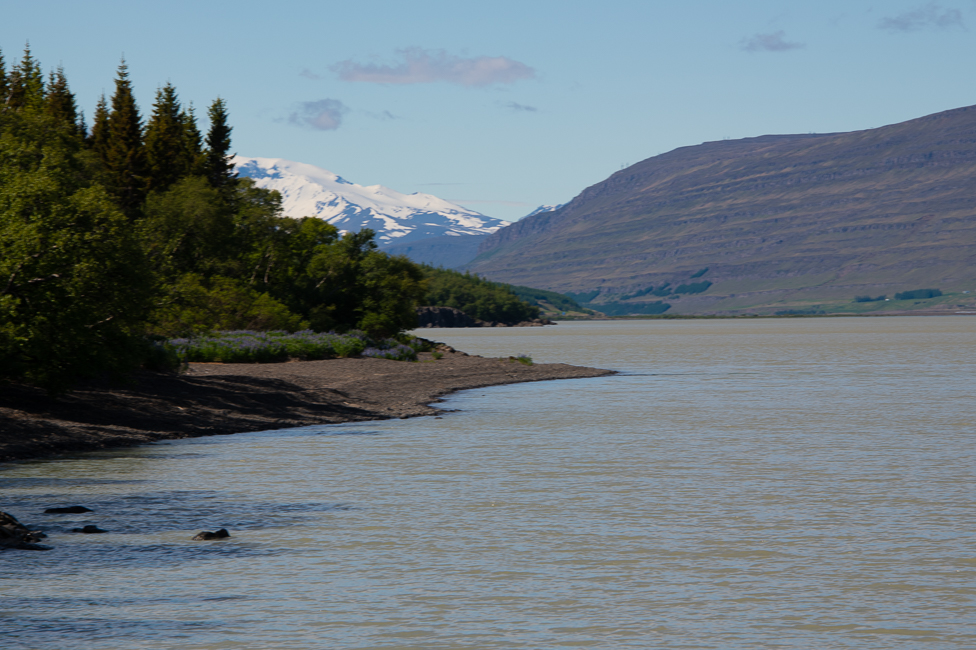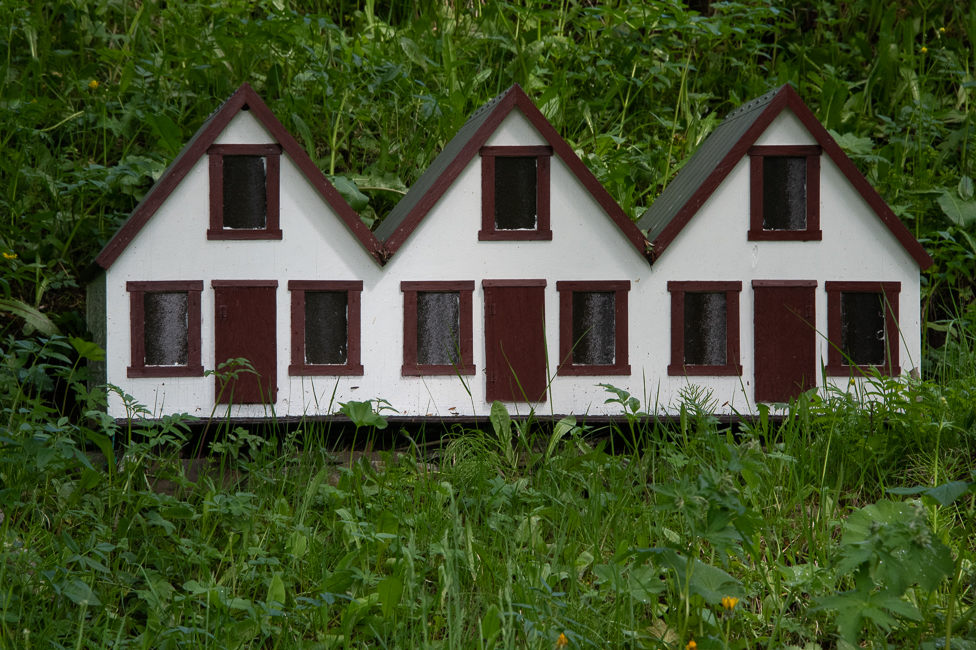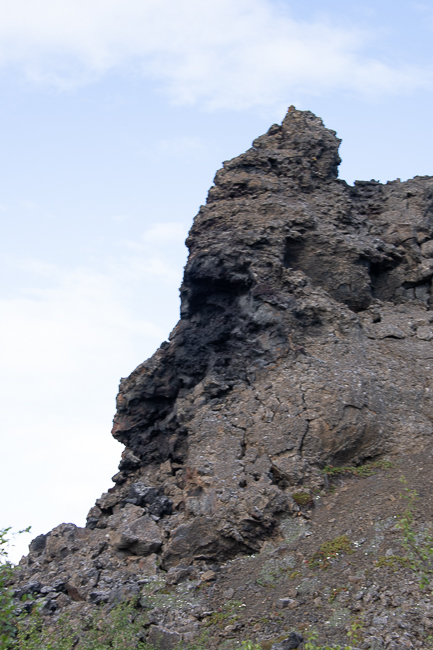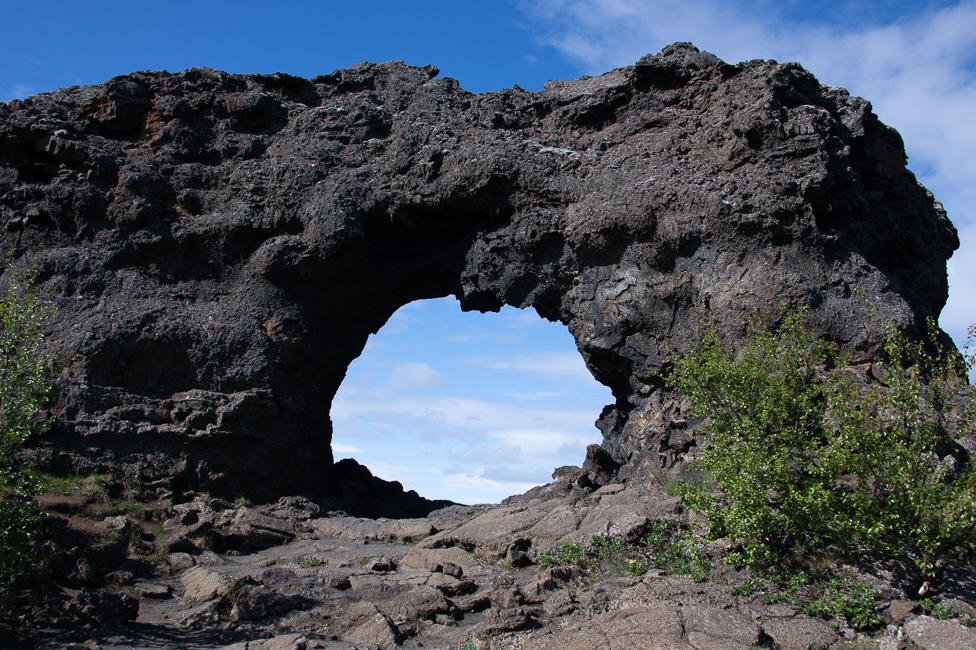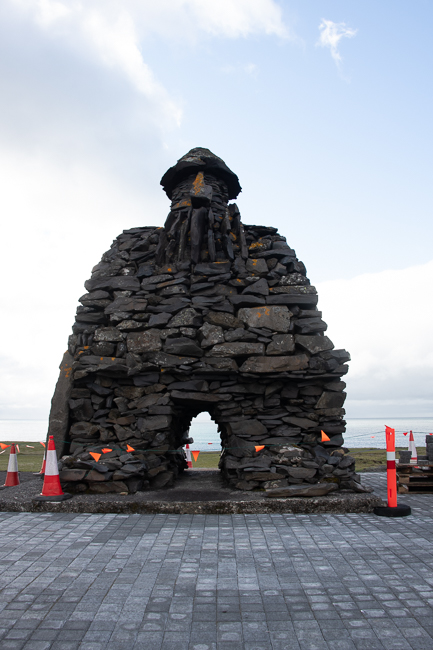June 2022
Öndvegissúlur, or high-seat pillars, were wooden poles placed on each side of the chair of the head of household in a Viking-period Scandinavian house.
According to writings in Landnámabók and sagas, written after the settlement of Iceland, some of the first settlers brought high-seat pillars with them from Norway. Once the land was sighted, the high-seat pillars were thrown overboard, and a permanent farm was established where the pillars washed ashore. The first farm established in Iceland, located where the capital, Reykjavík, stands today, was allegedly founded using this method.
And yes, this is obviously a reproduction. It sits in the town of Selffoss, and there is no record of it prior to 1940.
Basalt columns are created when a volcano erupts, and the hot lava flows cool off very suddenly. Apparently, this set of basalt columns is the home to elves. According to legend, in 1904, a young girl living in a nearby farmhouse was walking near Dverghhamrar when she heard singing. She looked around but saw no one. She was sure she knew the song. It was a Christian hymn about “The Father in Heaven”. The singing followed her all the way home. Due to this legend, Icelanders still believe that dwarfs are Christian beings.
Lagarfljót is a lake in Eastern Iceland. It is surrounded by Icelands largest Forest, Hallormsstaðaskógur.
The lake is home to Lagarfljótsormur or Lagarfljót worm.
As so many tales do, this involves a girl. Apparently, a young girl from the Lagarfljót area received a gold ring from her mother. She asked her mother how to keep it safe, and her mother responded that she should place the ring in a chest underneath a worm. She did so, but one day when she looked to make sure her ring was safe, she saw that the worm had grown too large for its chest, so she tossed it into the lake.
The worm liked the cold and stayed happily growing and growing. Eventually, it started wreaking havoc in the area, so the local fisherman called two Finnish shamans to put an end to the problem. Sadly all they did was neutralize the risk by tying the worm’s head to its tail, and it has remained harmless in this form for eternity.
Sightings continue to occur as frequently as those of the Loch Ness Monster.
Elves in Iceland are called the Huldufólk, which means Hidden People. Elves are a ‘living’ part of Icelandic culture. They are especially believed to live in rocks. Major roads have been diverted to avoid disturbing elves residing in the mountainsides. People will go out of their way to avoid stepping on rocks or hills in which elves are thought to reside.
When walking around Iceland, you will see tiny elf houses (‘álfhól’ in Icelandic). Apparently, this is to alert you that elves are present, so do not disturb them. But most likely, it is a cute way of saying, yes, I do believe in elves.
Dimmuborgir is a large area of unusually shaped lava fields composed of various volcanic caves and rock formations,. This area is also home to the Yule lads.
The Yule Lads are the sons of trolls Grýla and Leppalúði. They are a group of 13 mischievous troll pranksters. They come to town one by one during the last 13 nights before Yule, leaving small gifts in the shoes of good children or a potato if one has been bad.
Their names are Sheep-Cote Clod, Gully Gawk, Stubby, Spoon-licker, Pot-Scraper, Bowl-Licker, Door-Slammer, Skyr-Gobbler, Sausage-Swiper, Window-Peeper, Doorway-Sniffer, Meat-Hook and Candle-Stealer. Their names come from their particular talent in harassing the townspeople.
Witchcraft
“Seiður” is the Icelandic word that is used to describe the magic rituals that were practiced in Iceland during the Viking Age.
 Sorcery was commonly practiced in Iceland until the 17th century, when what is known as the Icelandic Brennuöld (The Age of Fire) took place, during which well over 200 people were officially charged for either practicing sorcery or for being in possession of dangerous magical artifacts. Although during the Icelandic age of fire, only 20 people, the majority of them men, were sentenced to death and burned at the stake.
Sorcery was commonly practiced in Iceland until the 17th century, when what is known as the Icelandic Brennuöld (The Age of Fire) took place, during which well over 200 people were officially charged for either practicing sorcery or for being in possession of dangerous magical artifacts. Although during the Icelandic age of fire, only 20 people, the majority of them men, were sentenced to death and burned at the stake.
The predominant theme of the Icelandic persecutions is that when someone fell ill or was involved in an accident, he would simply blame his misfortune on a particular person he did not like, who consequently had to prove beyond a shadow of a doubt that he was not a sorcerer.
The Bárðar saga Snæfellsáss is a relatively late Icelandic Saga, probably dating to the early 14th century. It is preserved in 16th- and 17th-century paper and vellum manuscripts and one fragment of about 1400. Bárður was the settler of this area, half a troll, and half a man, his father was half a titan, but his mother was human. Bárður came to Iceland in the 9th century and gave the peninsula its name, Snjófellsnes peninsula, but both words “snær” and “snjór” mean snow in Icelandic.
The sculpture is by Ragnar Kjartansson.
